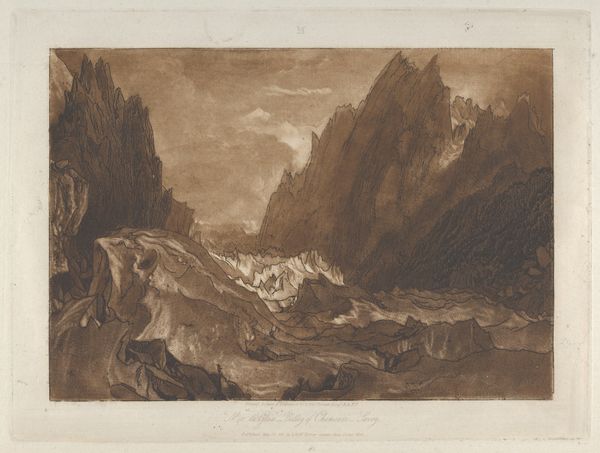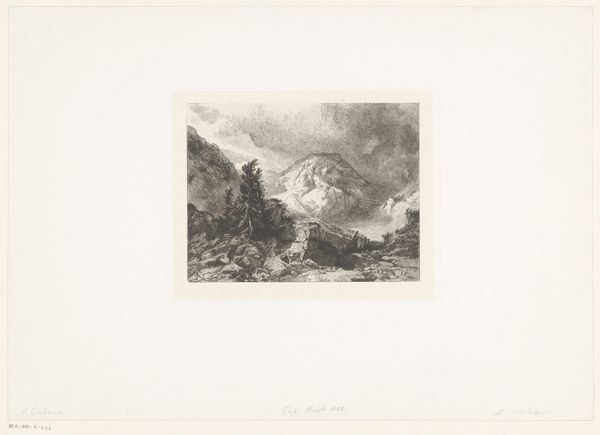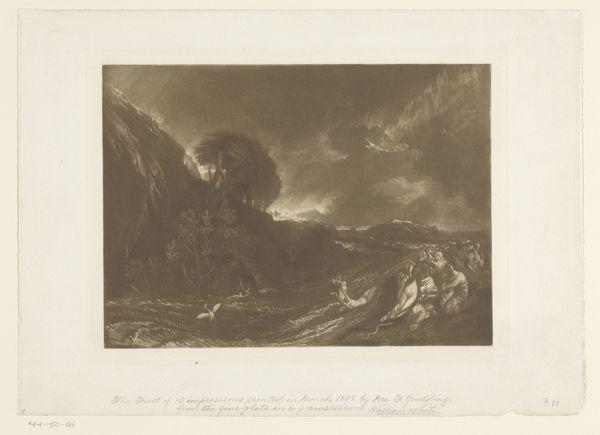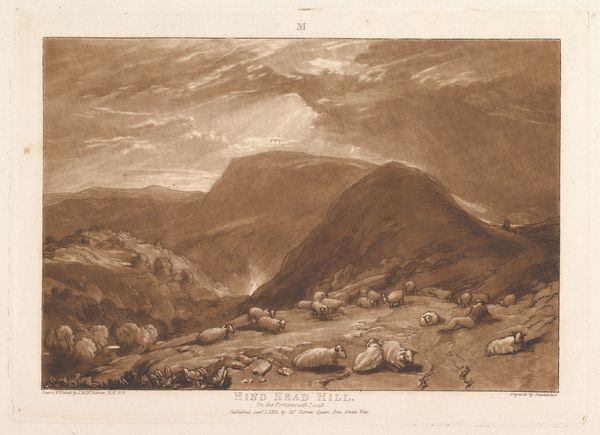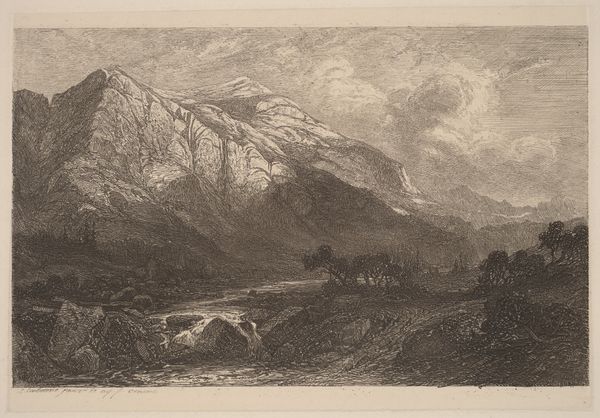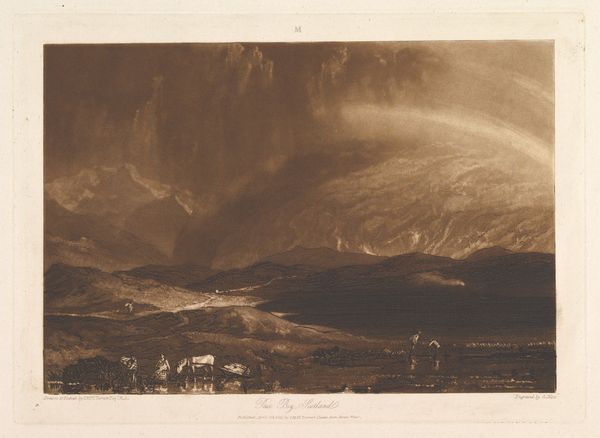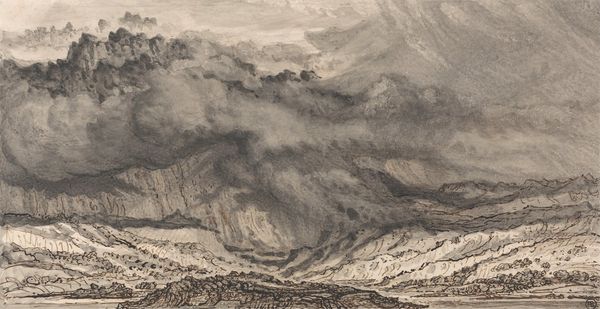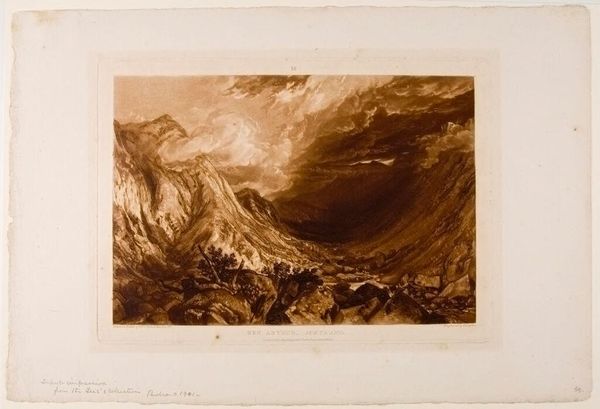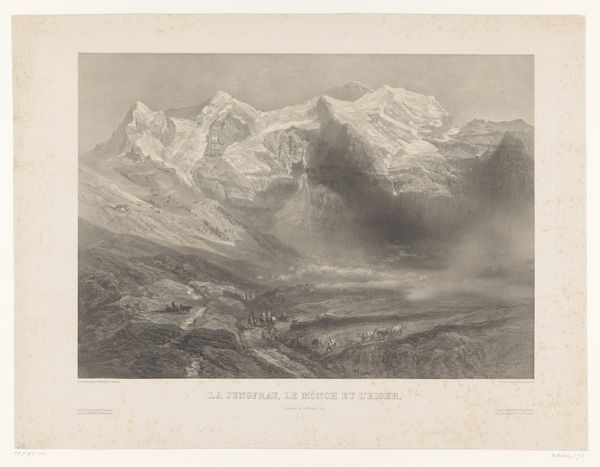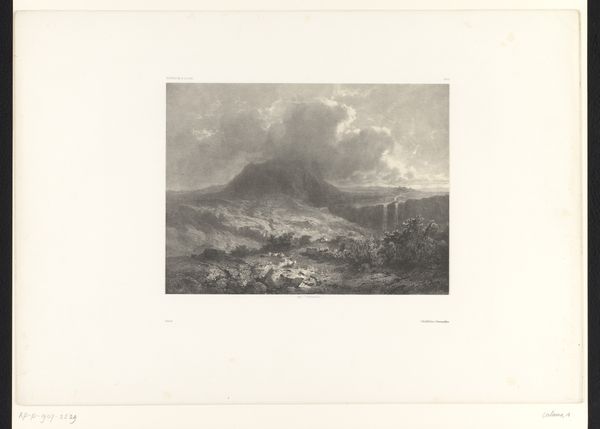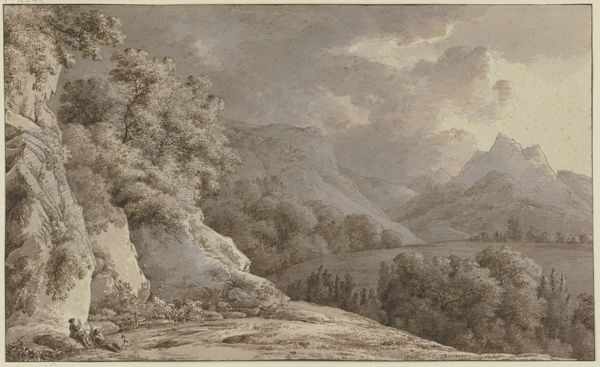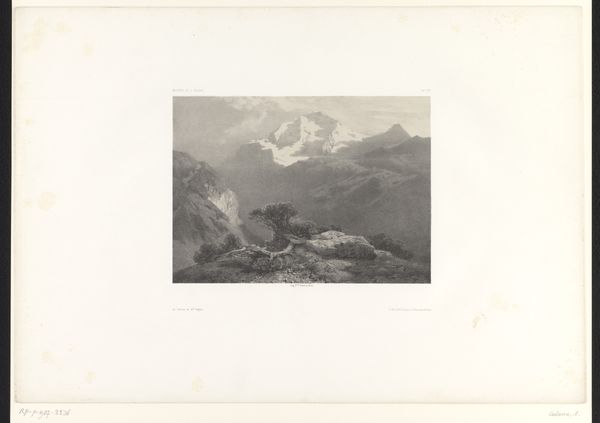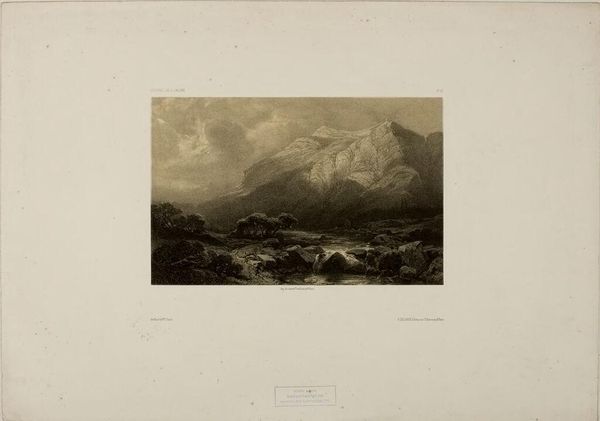
Ben Arthur, Scotland (Liber Studiorum, part XIV, plate 69) 1819
0:00
0:00
drawing, print, etching
#
drawing
# print
#
etching
#
pencil sketch
#
landscape
#
charcoal drawing
#
pencil drawing
#
romanticism
#
line
#
history-painting
Dimensions: plate: 7 1/4 x 10 1/2 in. (18.4 x 26.7 cm) sheet: 8 1/4 x 11 7/16 in. (21 x 29.1 cm)
Copyright: Public Domain
Editor: So, here we have Turner's "Ben Arthur, Scotland" from 1819. It’s an etching and mezzotint, rendered in this monochrome brown. It strikes me as very dramatic, with the heavy clouds looming over the landscape. What's your take on it? Curator: It's fascinating to consider this work through a materialist lens. Etching and mezzotint are intaglio printmaking processes, involving significant labor and skill to create the plate from which these images are printed. Think about the access to materials and the social structures that would allow Turner to create such work. Editor: Absolutely. The process itself is quite involved. How does that inform the piece itself? Curator: Well, Turner wasn’t just depicting a romanticized view of nature, he was actively engaged with a specific means of production. Etchings, like those in the *Liber Studiorum* series, were designed to be widely distributed and consumed, contrasting with unique oil paintings commissioned by the wealthy. The work itself speaks to how landscapes became commodified as a representational and reproducible item in 19th century Britain. Editor: So, the choice of printmaking democratizes the landscape, in a way? Curator: Precisely. Consider the distribution networks necessary to sell prints. These prints made images more widely accessible, thus shaping popular notions and creating a market for landscape art that intertwined art and industrial means. It challenges us to think about art not as solely the vision of a genius but a produced commodity circulated within a society. Editor: I never considered the implications of mass production like that before, tying into consumer culture and the economics around it. I’ll certainly see landscape art in a different light from now on! Curator: Good. Thinking through materials, labour, and production offers valuable new perspectives for analysis.
Comments
No comments
Be the first to comment and join the conversation on the ultimate creative platform.
